Home » Radon Mitigation (Page 2)
Category Archives: Radon Mitigation
How to Troubleshoot Your Clothes Dryer
Your clothes dryer is a very important appliance in your home. It helps you save money by drying the laundry at home instead of going to the Laundromat. However, there are times when it breaks down and stops working properly.
Since most people don’t know how to fix their broken clothes dryers, they will buy a new one or take their laundry elsewhere for drying. You don’t have to do that as fixing the clothes dryer is as easy as how to do laundry itself. Below is how to troubleshoot your clothes dryer without calling the repairman or buying a new one. Let’s get started.
Tools and Materials
- Voltage meter
- Long-handled bristle brush
- Rigid dryer vent
- New dryer fuse
- New dryer power cord
- Cotton swab
- Rubbing alcohol
- New dryer belt
Instructions
1. Check if the Dryer is Plugged In
Dryer problems happen because of power interruptions. Before you do any troubleshooting, make sure your dryer is plugged in. Check the voltage meter if there is electricity running through it.
If not, check the circuit breaker or fuse that provides energy to your dryer. Make sure that all electrical connections are tight and secure to avoid loose wiring. If you have an electric dryer, it runs on two circuits, including one for heating the element and one for the rest of the dryer.
So, if your dryer is getting hot but not drying, it could be that one of the two circuits is tripped. In this case, check the circuit breaker and reset the circuit as necessary. Also, learn how to install a dryer electric cord to avoid any electrical issues.
2. Make Sure Your Dryer is Not Overloaded
If you’re trying to dry a lot of clothes at once, your dryer might be too overloaded to function properly. In this case, try drying fewer items or use a larger dryer. Overloading the dryer can cause drying performance and noise issues when too much weight is inside the dryer.
When you squeeze too many clothes into your dryer, you decrease the airflow needed to dry clothes properly. Overloading also makes your dryer work harder, use more energy and increase drying time. Avoid filling your dryer drum more than three-quarters full.
3. Check the Breaker or Fuse
If your dryer is plugged in but won’t turn on, the power source is the first thing you want to check. It’s possible that the breaker has been tripped or the fuse needs to be replaced. Check the Breaker Box If you have an electric dryer, turn off the circuit with a tripped breaker switch and reset.
If you have a blown thermal fuse, replace it with the same amperage and rating. Also, check the voltage in the outlet using a voltage meter and make sure your outlet is functioning properly. If it’s not functioning, call the electrician immediately.
If you have a gas dryer, make sure the pilot light is lit and that you have an adequate supply of gas if the dryer is fueled with liquid propane. Both electric and gas dryers require 240 volts to operate. And if the dryer power cords fail, check the voltage and replace it if needed.
4. Inspect the Fuse, Switch, and Belt
If you have a power outage or surge in your home, it’s possible that the thermal fuse in the dryer control panel is damaged. Dryers also require a door switch to engage for the appliance to work. However, these switches can break.
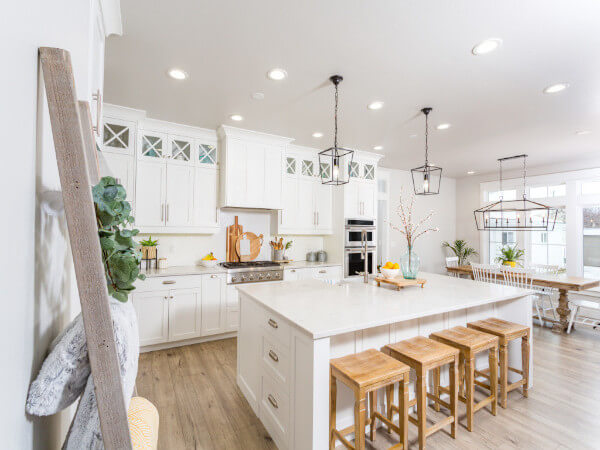
You can get them coated with lint or use a cotton swab and a bit of rubbing alcohol to clean the contact areas. Check the rubber belt that connects the motor to the drum if your dryer heats up, but the drum doesn’t turn. If it’s loose or broken, replace it. It’s a good idea to inspect the fuse, switch, and belt before a service call.
The fuse is located on the dryer wall and is usually a small, round glass tube. If it’s blown, replace it with one of the same amperage and rating. The switch is located near the dryer door and is either a toggle or rocker switch. If it’s not working, replace it.
The belt is located around the dryer’s drum, and if it’s broken, worn, or loose, it will need to be replaced. After getting the new belt, place it on the drum where the old belt had been and wind it onto the idler pulley and the motor pulley.
5. Check and Clean the Temperature Sensor
If the sensor is dirty, it will not read the correct temperature, and your clothes will not dry properly. To clean it, unplug the dryer and remove the screws that hold the sensor in place. Clean it with a soft brush and replace it.
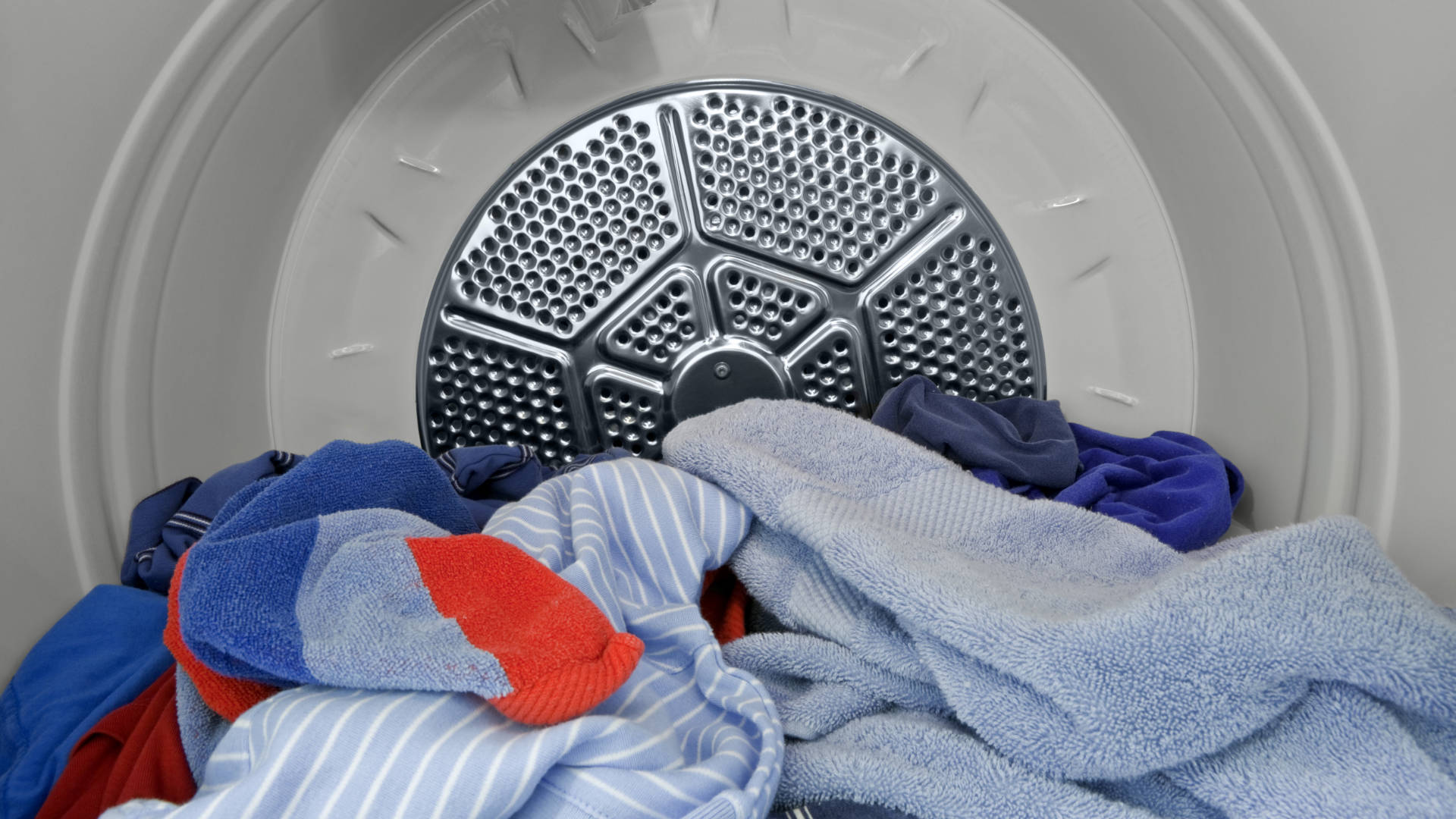
Test the dryer to see if it’s working properly. If your dryer turns on and shuts off very quickly, the problem could be either the thermostat or thermal resistor. The thermal fuse blows and turns off the dryer to prevent overheating.
Use a voltage meter to check the temperature sensor to determine if it’s working properly. Also, check the heating element and timer to be sure they’re receiving power. Check the user or repair manual.
6. Clean the Lint Trap
Clean the lint trap after every load of laundry to ensure your dryer is running properly and efficiently. A clogged lint trap can cause your clothes to take too long to dry. Hard lint buildup in the trap can cause your clothes to dry slowly, if not at all.
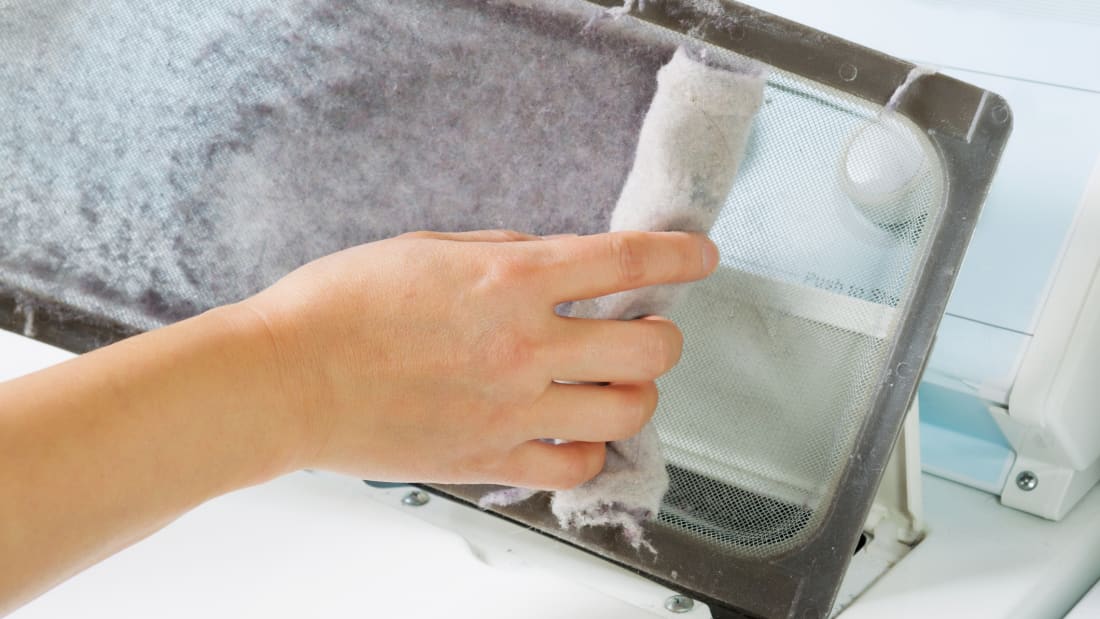
If your lint filter is full, the air is not flowing freely, and your machine is forced to work longer than necessary. After emptying your lint filter, wash with warm soapy water and let dry completely to remove any residue from the dryer sheets. Use a bit of rubbing alcohol to clean the electronic moisture sensors. This will leave your dryer working more efficiently and prevent a possible fire.
7. Check the Air Vent and Ducts
The air vent and exhaust duct play a key role in the drying process. Make sure they are clear of any debris or obstructions. If you have pets, their hair can clog up the vents and ducts, resulting in a clothes dryer that does not work properly.
If your dryer vent system is kinked, clogged, or disconnected, use a long-handled bristle brush to clean out the dryer vent. The vent should be as short as possible between the machine and the outside exhaust vent to prevent clogs. If your venting system is long and you can’t reach the entire length with a brush, use a leaf blower to clean the system or hire a professional.
If you still have a flexible white plastic dryer hose, replace it because this is a fire trap waiting for a disaster. And that’s why new building codes require a rigid dryer vent. Make sure you check the outside vent as well.
Most of them are designed with a trap door that only opens when dryer air and lint are blown out. The trap door won’t open if the vent hood gets coated with lint, especially in high humid climates.
8. Make Sure the Dryer is in a Ventilated Space
Your dryer needs to be in a well-ventilated space so the hot air can escape. If the dryer is too close to a wall, the air won’t circulate, and your clothes will take longer to dry. In fact, if the back of the dryer is against a solid surface, it can cause the motor to overheat.
If you’re installing your dryer in a closet, make closet doors have ventilation openings at the top and the bottom of the door. The front of your clothes dryer requires a minimum of three inches of airspace, one inch on the sides.
9. Check for the Heat Problem
If your clothes take too long to dry, first check the heat problem. The most common reason for clothes not drying is that the dryer isn’t getting hot enough. Hold your hand under the outside exhaust hood to check air movement. If the air movement is less than a hair dryer at high speed, clean the lint from the entire length of the system and exhaust hood.
The dryer isn’t heating if you can’t feel any air coming out. One way to test if the dryer is getting hot is to use a thermometer. Put the thermometer in the exhaust pipe and ensure it reads at least 130 degrees Fahrenheit. If it’s not reading that high, you need to troubleshoot your heat problem.
10. Check the Dryer Blower Wheel
Another common reason for the lack of heat is a blocked dryer blower wheel. This can happen if the lint screen isn’t cleaned often enough. To check if the blower wheel is blocked, open the dryer’s back panel and look at the blower wheel.
If it’s dirty, clean it with a vacuum cleaner. With the back panel open, check the blower wheel for cracks or obstructions that may be preventing it from spinning. To remove the blower wheel, open up the dryer by separating the top and front panels away from the main dryer cabinet. Pull the drum off the drum bearing to have full access to the motor and then unscrew the blower wheel from the motor.
11. Replace the Control Panel
If the dryer isn’t getting any power, you’ll need to replace the control panel. Before doing this, unplug the dryer and remove the back cover. During this step, you will find your thermal fuse, and its location will be dependent on where it is in your particular model of appliance. Read your owner’s manual for information about control panel components to order the correct replacement.

FAQs on Troubleshooting Your Clothes Dryer
What is the common problem with dryers?
Excessive noise is the most common problem with dryers. A new drum belt can help eliminate some of the noise during operation, but there could be other problems if it doesn’t work.
How do I know my dryer isn’t working?
If you have no power, your dryer isn’t working. Begin troubleshooting by unplugging it and checking the power at your electrical outlet to be sure.
Does my dryer need an electrical reset?
If your dryer is making some noise but isn’t tumbling, you can check to see if the drum needs to be reset by pulling the lint out of the back of the machine where you would normally clean it. There’s a small red button on the motor that you can push with a paperclip or something similar to reset it.
Final Thought on How to Troubleshoot Your Clothes Dryer
As you can see, troubleshooting your clothes dryer can be easy if you know what to look for. If you don’t, it can be difficult and time-consuming to learn while trying different things that may or may not work.
Before getting a new dryer, make sure you try these troubleshooting methods, and if you have no clue where the problem might be coming from, don’t hesitate to call a professional.
The post How to Troubleshoot Your Clothes Dryer appeared first on Kitchen Infinity.
Did you miss our previous article…
https://www.conduithardware.com/?p=767
VA-Based Supplier Dave’s Cabinet is Acquired
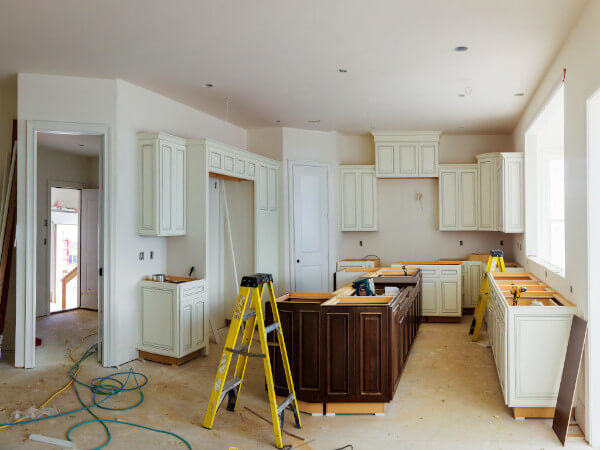
CHESAPEAKE, VA — Dave’s Cabinet, a leading cabinet manufacturer in the Mid-Atlantic region, has announced that the ownership interest of company founder David Alderman CMKBD, has been purchased by John K. Morgan, CEO of Green Forest Cabinetry.
Terms of the transaction were not disclosed.
Dave’s Cabinet, founded in 1980, occupies three manufacturing buildings on approximately 40 acres of land in Chesapeake, VA. The business consists of a fully equipped end-to-end cabinet manufacturing/finishing facility, a retail division, plus a modern granite/quartz fabrication unit.
“I am incredibly proud of the 40+ years of Dave’s Cabinet’s success, especially the commitment and work to better our local community,” said Morgan, who, along with Alderman, is a past president of the National Kitchen and Bath Association (NKBA).
“I could not be more pleased to have the opportunity to lead his legacy to the next level of tomorrow’s micro-manufacturing world,” Morgan added.
Under the terms of the agreement, Julie Boone will retain her existing ownership interest in Dave’s Cabinet, said the company, which also announced a continuation of an annual $5,000 grant/scholarship to both the Great Bridge Baptist Church, a local parish, and the student program at the NKBA nationally.
The post VA-Based Supplier Dave’s Cabinet is Acquired appeared first on Kitchen & Bath Design News.
10 Elegant, Traditional Living Rooms
Thanks to their comfort, the traditional living room style has stood the test of time. However, decorating a traditional style living room can sometimes be hard. There are so many rules and regulations that you have to follow.
Many people don’t know what they should do with the furniture or how to decorate living rooms to achieve the perfect look. We created this guide for those who want to create an elegant, traditional living room but don’t know where to start. Here are 10 elegant traditional living rooms you can copy.
Go Gray in a Traditional Living Room- The Lighter Shade, the Better
When you think about elegant traditional living room colors, dark shades like maroon should be the last thing on your mind. Keep in mind that a lighter color is a sign of sophistication and wealth, so try to paint your walls in a shade of gray or white. You can also opt for some light blue or beige tones.
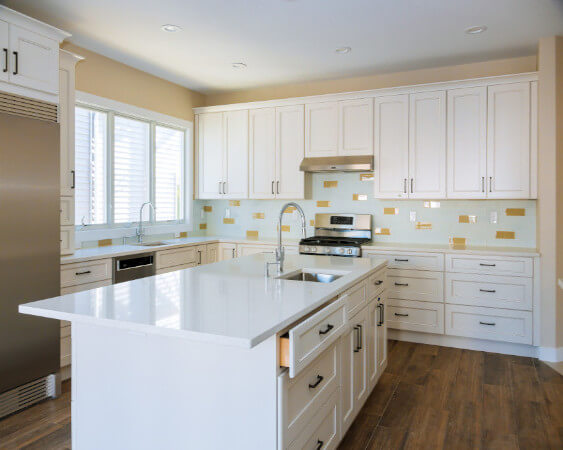
These colors will create a sense of openness and airiness in your living room. Gray is one of the most popular colors in any living room, but it can blend well in traditional living rooms. Pick some lighter hue with some grays and charcoals in your cushions and rugs for the floor.
Choose the Best Paint for Your Traditional Living Room
To choose paint colors for your room, opt for darker but muted paint colors like Benjamin Moore’s HC-146 Coventry Gray or Sherwin Williams SW6103 Spanish Cloth for an elegant, traditional look. These colors will give your room a rich and classic feel. If you want to add a pop of color, try painting an accent wall in a bolder hue.
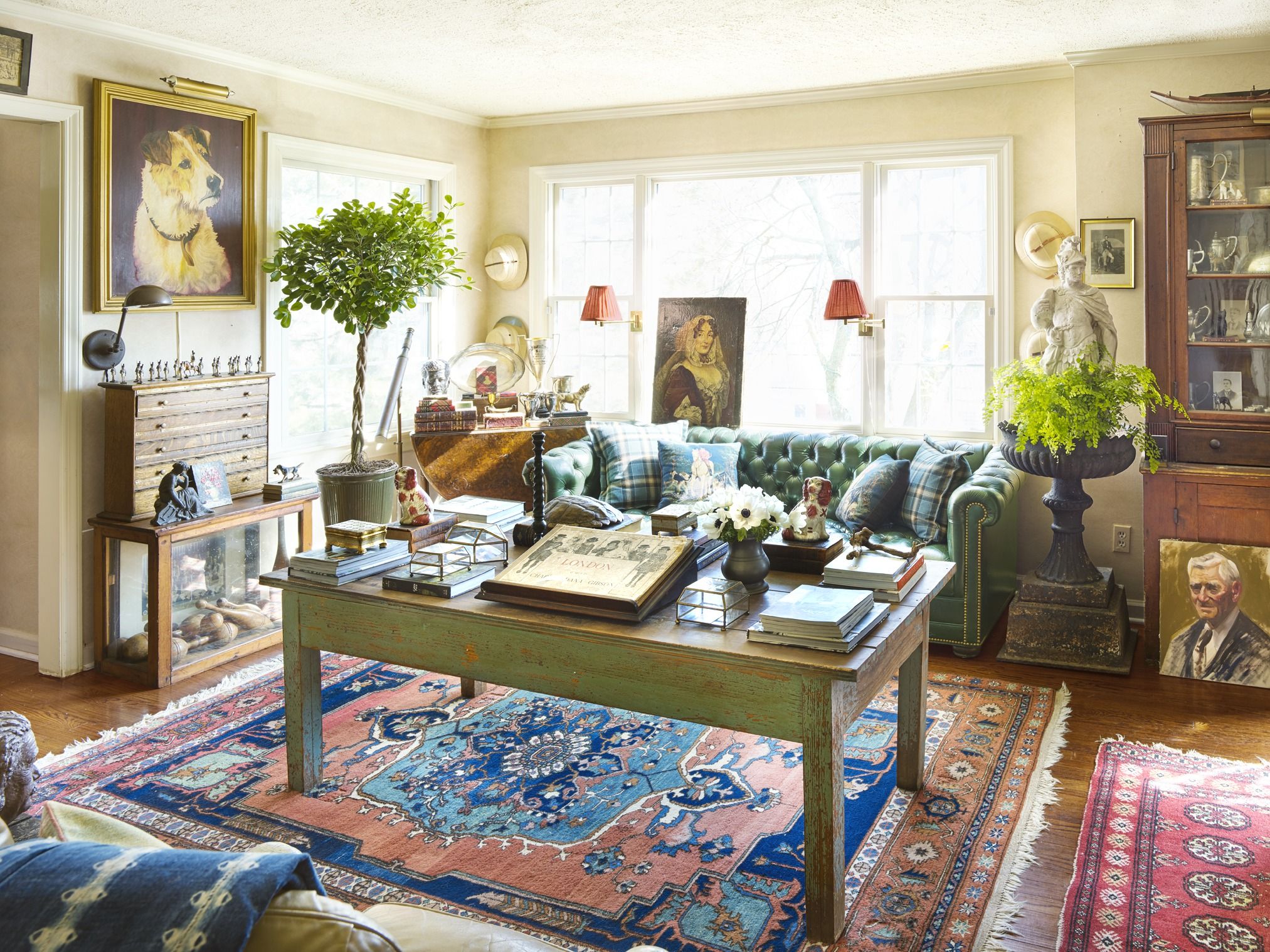
This can be a great way to show your personality in your traditional living space. A warm color scheme would also be perfect for your traditional living design, especially if you’re sticking religiously to the style.
So, opt for warm neutrals, purples, reds, and forest greens. In addition, bright white and cool gray tones can create a simple, clean backdrop for your more traditional furniture.
Breezy Plains and Prints, Lafayette Residence, San Francisco
This is one of the great examples of traditional living room ideas. The dark-walled living room is softened with large white windows, high ceilings, and a fireplace. The pairing solids in the comfortable sofas, armchairs, and rugs give the room a curated, comfortable feel.
Choose Striped Upholstery for Timeless Feel
Whether you choose chic, wide stripes, or rustic french ticking linens, striped fabrics are a brilliant choice when it comes to upholstery and window treatments in traditional rooms. They are inoffensive and easy to live with because they can stand the test of time and come in all manner of weaves, weights, and different colors to match your scheme.
Consider Contemporary Features
The key to a traditional living room that doesn’t feel stuffy is to add contemporary features. This could be a sleek fireplace, a minimalist coffee table, or even pops of color. The contemporary sofa and armchair contrast beautifully with the more traditional features like the rug and fireplace in this living room.
Contemporary interiors feature sleek furniture and smooth lines. With these contemporary interiors, you won’t see a lot of tufting, piping, and patterns with contemporary pieces. The favored shape is rounded. You’ll see lots of coffee tables, lamps, and end tables in contemporary spaces.
You can use accessories such as candle holders, figurines, and other tabletop accents to keep it at a minimum. Other than traditional interiors, you can bring in wall art to bring that traditional feel.
Blue and White Glamor in a Living Room
For a more traditional living room, you can use dark paint colors and add dark accents such as chandeliers and even rugs. Use lighter colors like whites, grays, and yellows for contemporary spaces. You can add lots of light fixtures, such as track lights, to give off that contemporary vibe.
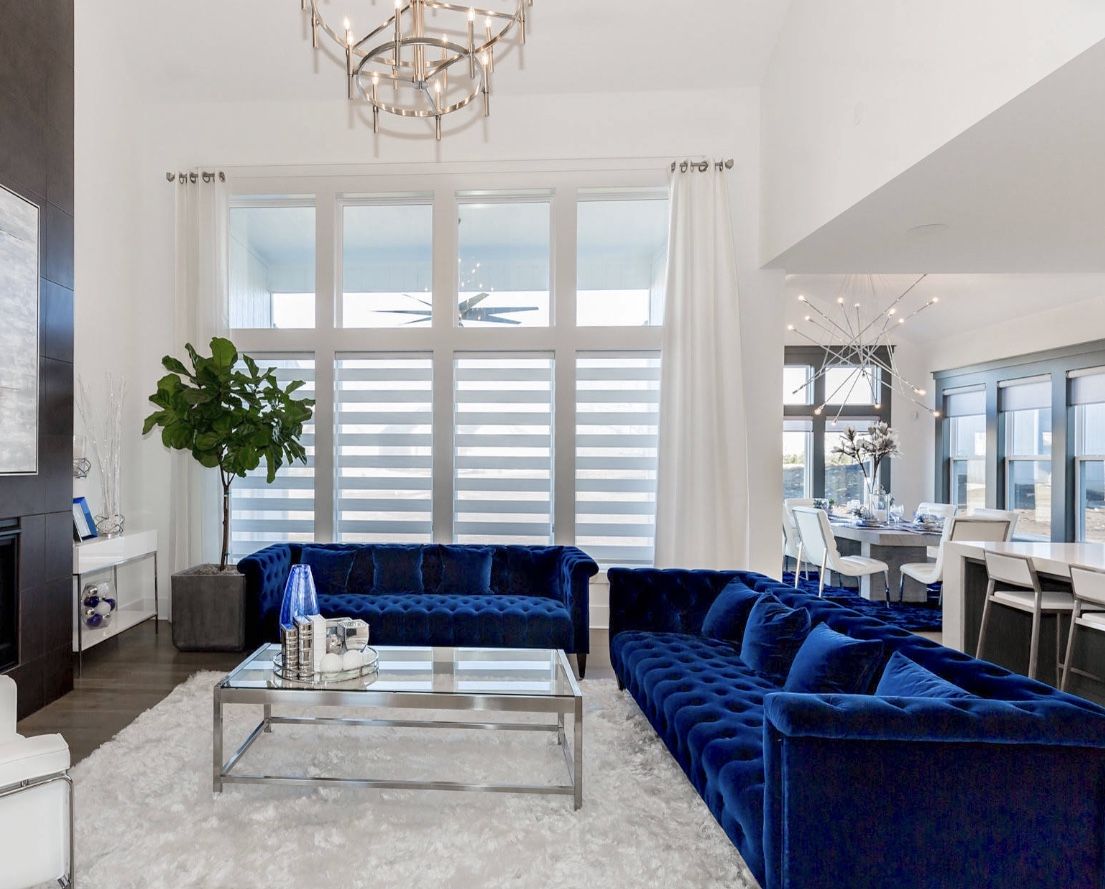
You’ll also see hardwood floors in contemporary spaces, whereas traditional living rooms will have carpeting or rugs. Although you’ll see delicate armchairs in traditional living rooms, the emphasis when it comes to seating is on comfortable, sit-back, and relaxed pieces. Traditional roll arm or birch sofas are right at home more often when loaded with throw pillows to increase comfort.
High Ceiling Living Room
In traditional living rooms, you’ll often find more ornate details like crown molding and detailed woodworking. You’ll also see a lot of wallpaper, which can be used to create a luxurious or formal look. Rugs will usually be oriental or Persian, and flooring will be hardwood.
When it comes to furniture, a traditional living room will have a lot of dark wood pieces with upholstery in a neutral color. Traditional seating is made from leather, velvet, or tweed. There may be some tufting on the arms and back of sofas and chairs, as well as nailhead trim. Apart from tightly upholstered furniture, there will also be an iron lantern and architectural details to make the room look current.
Exposed Beams in a Living Room
Traditional living rooms will often have a large fireplace. You should avoid wallpaper with a busy pattern and choose something solid in color. If your furniture isn’t upholstered in a neutral color, you can add it yourself using slipcovers.
Lighting has to be traditional or even antique in these kinds of living rooms. Chandeliers and sconces are perfect, and you can also use floor lamps with shades that match the walls. Area rugs are a must in traditional living rooms, and you should choose something with a very traditional pattern like oriental or Persian. Leave the modern patterns for other parts of your home.
When it comes to accessories, keep them simple and elegant. Traditional living rooms don’t need a lot of clutter, so choose a few select pieces and display them carefully. Think vases, figurines, paintings, ornaments, and even plants. If you want to create a cottage-style charm in your living room, consider a botanical theme.
The rustic wooden beam and spare furnishings of the cottage work well with botanical prints and indoor flowering plants. You can also create a timeless vintage-inspired appeal by including shabby chic. Shabby chic takes the antique pieces from the traditional to vintage-inspired appeal.
Hang Curtains in Archive Fabric Prints
There are all sorts of window treatments to choose from but nothing says traditional style like classic floor to ceiling drapes. In that case, inject luxurious patterns and history into your living space using a rich archive of velvets, weaves, and embroideries. Traditional homes are often roomy with high ceilings and large windows, making it important to scale up.
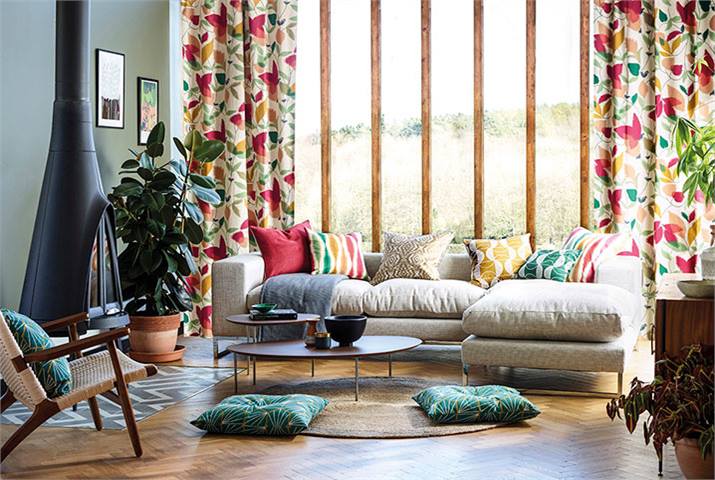
Choose large-scale patterns to get the proportion right, and don’t be afraid to match the same pattern on the walls and the curtains. Make sure your decoration pays respect to the past and lives today to enable them to work well with both traditional and contemporary furniture.
Furnish with Antique Pieces
One of the easiest ways to add traditional elegance to your home is by including antique furniture in your design scheme. Not only will you have unique pieces that are sure to impress guests, but you’ll also get the benefit of their classic style and craftsmanship.
Fine crafted using traditional methods and boasting a quality of manufacture inimitable by many modern designs. Antique furniture makes a great choice for furnishing a traditional living room, whether you have a period property or looking to create a traditional look.
When choosing antique furniture, consider the era it comes from so that you don’t accidentally choose too mismatched pieces or from different periods. A dated color scheme may also complement the look you’re going for. For example, a rich gold finish with dark wood tones may work well with a traditional style, while a gilded mirror will shine against a neutral-colored wall in an entryway. Also, go for items that will sit on open shelves without taking much space.
Fit Floor to Ceiling Bookshelves
No traditional living room is complete without floor-to-ceiling built-in bookshelves. Not only do they provide functional storage for all of your books, but they also add architectural interest to the room.
Consider having your carpenter build a custom design that perfectly fits your space. Or go for a vintage look by choosing wooden shelves and painting them a dark, contrasting color.
Decorate with Mirrors and Art
Mirrors and artwork make for great focal points in any room – but this is especially true in a traditional living room. Fill your walls with large-scale wall art either grouped or spread apart to create visual interest and conversation pieces. Plus, mirrors will bounce light around the room and make it feel larger.
Go All-Cream for a Luxurious Look
A traditional living space so sumptuous that it feels like a bedroom is not always a good idea, especially when you have kids and pets around. But if you want a living room with lots of luxury, then consider piling in the cream color. You can’t go wrong with the warmth that this color brings to a room. Plus, all cream-schemes will bring out all the different textures of your soft furnishings.
FAQS on Elegant, Traditional Living Room Ideas
What makes a room traditional?
Elegant shapes, refined textures are hallmarks of a traditional living room. Plus, a charmingly predictable sense of order makes traditional style one that’s always warm and charming. While decorating may change the trend, traditional living rooms will always be style.
What is the difference between a traditional and a classic living room?
The classic living room is more formal and elegant than the traditional style, meaning that modern pieces will elevate a space and give it a more formal, elegant vibe, while the traditional style will be a lot more relaxed and approachable.
Final Thought on Elegant, Traditional Living Rooms
As you can see, there’s no style that lends itself to elegance and sophistication better than the traditional style. In fact, traditional interior design has paved the way for several modern design styles you see today. If you want to give your home a classic and elegant look, traditional design is the way to go. You can even mix and match styles if you choose to.
The post 10 Elegant, Traditional Living Rooms appeared first on Kitchen Infinity.
Did you miss our previous article…
https://www.conduithardware.com/?p=749
Wrapping 2021 and Looking Ahead
What a long, strange year it’s been! Let’s take a look back at the dominant 2021 trends and anticipate what 2022 will likely bring.
While it’s hard to predict with clarity, given some major unknowns, here are some hot takes from across the industry and the country from unique perspectives:
- San Diego-based designer Tatiana Machado-Rosas, Jackson Design and Remodeling’s design department manager;
- Long Island, New York-based kitchen and bath designer Susan Serra;
- Home Technology Association CEO Josh Christian;
- Bob Gifford, business development director for luxury retailer Hastings Tile & Bath in New York City;
- Susan Chung, research v.p. with the American Society of Interior Designers;
- Boise, Idaho-based custom home builder Emily Clark of Clark & Co. Homes.
Wellness Trends Accelerate
Designers have been focused on wellness for decades with interest from some clients, but the pandemic really drove its importance home. Literally! “For 2021, a continued focus on health and hygiene helped drive the kitchen,” observes Chung. She also sees its importance elsewhere, noting that “the bathroom really became a place to escape the stress and fear of the outside world.” Wellness showed up in outdoor, work from home and mindfulness spaces, too. “As the home became a hub for all types of activities colliding together, homeowners were looking to design as one way to alleviate stress and promote tranquility,” the ASID executive concludes.
Beyond the spaces noted above, wellness showed up in related rooms. “The switch from what had been called the ‘mud room’ to what is now called the ‘utility room’ or pre-wash area; so many people wanted a location to drop groceries and sanitize items before heading into their homes,” shares Gifford. This is tied to an increasing interest in hands-free functionality, he explains: “Soap dispensers, faucets, hand-towels – anything and everything that gave people a sense of comfort and control over their environment.”
Kitchen Design Trends
“Multipurpose kitchens with open floor plans continued to be a strong trend as clients look to make their kitchen the vibrant heart of their home,” says Machado-Rosas. “Integrating smart technology, particularly with more people using the kitchen space to work from home or attend virtual classrooms, became even more essential. In addition, clients had a renewed interest in keeping their spaces hygienic, which led to a desire for easy-to-maintain materials for countertops and flooring,” she adds. The design manager conversely sees a resurgence in natural stone for sinks and countertops, attributing it to a desire for the sense of calm that comes from a connection to nature.
Across the country, Serra sees three dominant trends: “Wellness on steroids, cooking convenience and visual comfort.” Health and cleanliness were the top concerns she was hearing from clients. This included “performance materials in surfaces, as well as appliances [and fixtures] that promote healthy living and preserve our health, such as renewed attention to proper ventilation, enhanced touchless faucets and larger sinks going mainstream – often with two faucets” as a few examples.
Changes in shopping and eating habits are also influencing kitchen design, the New York designer believes. “A new hybrid type of cooking has emerged; time (but not too much) is being taken to create healthy homemade meals from fresh, quality foods, assisted by smart, efficient appliances. The purchase of a freezer for bulk food storage, better cabinet storage solutions and designing in more countertop space creates a near utopia for one or more cooks.”
Visual comfort is also a trend, Serra has observed. “As the kitchen has taken on more lifestyle functions in the past 18 months, homeowners are much more open to creative design solutions,” she shares. This has meant larger windows, nature-inspired texture and finish mixes, and comfortable dining areas with flexible designs or banquettes. “The transition of the kitchen aesthetic to more seamlessly integrate with surrounding rooms lessens the perception of the kitchen as workspace and nudges it more toward a living space,” she suggests.
Clark has also seen kitchens evolve, she comments, citing an “expansion of the scullery or the working pantry, work zones as opposed to a work triangle, and multiple mini-kitchens for multi-generational living.” Antimicrobial counters, touchless faucets and chef sinks also support healthy living and cooking, the home builder notes. Natural finishes, warm woods and creative design solutions with saturated cabinet colors are showing up in her northwestern region too.
Bathroom Design Trends
“The emphasis in bathroom design has been to create a highly customized space that communicates joy and tranquility,” Machado-Rosas observes. “Clients have been seeking a personal retreat with a spa-like atmosphere where they can truly relax.” These have included steam showers, heated floors, statement tubs – sometimes custom – and premium features catering to clients’ personalized needs and desires. Natural materials show up in these luxury bathrooms, too, the San Diego designer notes. “Balancing porcelain or glass tile with natural woods and stones and amplifying natural light have been popular,” she adds.
Clark sees the trend toward personalized luxury in her Idaho homes, as well. These include “sculptural soaking tubs, steam showers with light, sound and aromatherapy, tiles with hand-cut looks and subtle tonal differences, reeded or fluted textures, oversized area rugs and diaphanous drapes.”
“All during 2021, we worked with designers who wanted (and still want) the flexibility to customize their projects by using different colors and finishes for their vanities,” Hastings’ Gifford recalls. “For tubs, the solid surface materials remain popular because they have a supple texture and they are easy to clean and maintain.” The New York retailer also saw strong interest in hands-free faucets with white finishes and versatile wall-mounted vanities.
Technology Trends
Technology continued to trend in kitchen and bath projects, and it shows no sign of slowing. Smart features have a growing presence in kitchens and bathrooms, Home Technology Association CEO Christian notes. “We are seeing entertainment products being installed in kitchens like waterproof TVs built into the counter backsplash, charging docks, tablets for cooking tutorials or recipe surfing, built-in ceiling speakers or a simple wireless speaker on the counter.” He is also seeing sleek, integrated outlets, lighting keypads and flush-mounted concealment systems so that the room’s electronics are present but hidden.
“With bathrooms, we are seeing a lot of circadian rhythm lighting being installed so that time spent in the bath is consistent with a homeowner’s sleep cycles,” he says. Additional bathroom technology trends cited by the designers include smart toilets, enhanced shower systems, built-in sound and lighting systems and smart shadings.
Machado-Rosas sums up the situation this way: “We saw a significant increase in clients asking for fully integrated smart technology in their homes. Because of the combination of enhanced affordability and ease of use, we expect to see this trend grow exponentially in the years to come.”
Predictions for 2022
ASID’s Chung is anticipating that flex spaces, universal design, locally sourced products because of supply line and sustainability concerns will trend in 2022. She also believes that the pandemic has increased the perceived value of designers in helping their clients navigate the challenges brought about by the pandemic.
HTA’s Christian anticipates a strong push toward wellness technology, indoor and outdoor home theater spaces and the death (at least short-term) in ‘just-in-time’ delivery systems. He also sees designers working earlier in the process with technology professionals to more seamlessly integrate their projects.
Hasting’s Gifford predicts the increasing importance of video tours to replace travel and live events where possible. He also anticipates more integrated sink/vanity options, solid surface tubs continuing their popularity and, though no one wants to hear this, he notes, price increases across all products because of the increased costs of raw materials.
Among the designers, Serra anticipates appliances with upgradable technology, more dining space in kitchens, and more storage for multiple cooks. Machado-Rosas expects to see technology show up in more products and for smart home systems to become more affordable, a continued attention to creating calming spaces, multi-purpose rooms, larger pantries and customized bathrooms. She also expects minimalism to trend strongly for its low-
maintenance benefits.
Home builder Clark expects to see more hidden kitchens, induction, multi-function appliances and less upper cabinetry. She anticipates bathrooms getting more artisanal materials, sound and light enhancements for spa effects, and even what she calls family wellness suites. These would resemble high-end spa facilities with steam or sauna areas, grooming stations and central shower stalls.
While 2021 kept many design industry professionals at home, dealing with inventory and other challenges, 2022 is already shaping up to be a more active, in-person kind of year. The Kitchen & Bath Industry Show, paired again with the International Builders’ Show, will meet in person in Orlando in February. Exhibitors reflecting the trends observed by these professionals will be on hand to share their wares. I’ll be there. Will you? 
Jamie Gold, CKD, CAPS, MCCWC is an author, wellness design consultant and industry speaker. Her third book, Wellness by Design (Simon & Schuster), published September 2020. You can learn more about her Wellness Market presentations, books, Wellness Wednesdays Clubhouse conversations and consulting services at jamiegold.net.
The post Wrapping 2021 and Looking Ahead appeared first on Kitchen & Bath Design News.
Did you miss our previous article…
https://www.conduithardware.com/?p=692
Kitchen Franchise Company Adds Pair of Business Units
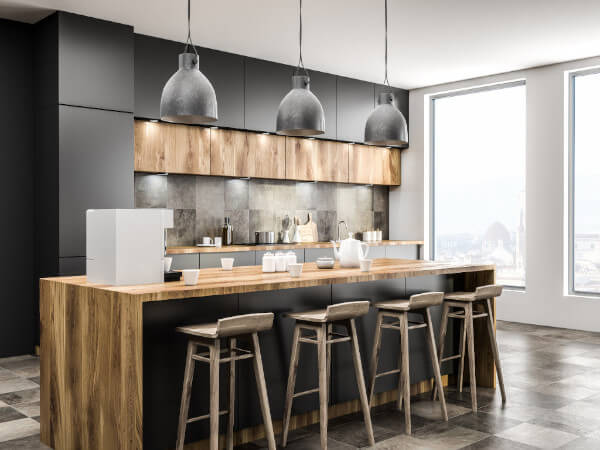
CHARLOTTESVILLE, VA — Multi-brand franchisor Premium Service Brands has added a major grout cleaning and restoration franchise to its network of home-service brands, the company announced.
The 67-location franchise operation The Grout Medic was added to a roster of home-service franchises that includes kitchen remodeling brand Kitchen Wise, painting brand 360-Degree Painting, cleaning brand Maid Right, outdoor surface cleaning brand Renew Crew, home-repair brand Handyman Pro, junk removal franchise Rubbish Works, and garage-door services brand ProLift Garage Doors, the Charlottesville, VA-based Premium Service Brands said.
Premium Service Brands also announced the acquisition of 36-unit handy- man franchise House Doctors, a home-services provider that was previously owned and operated by Saltire Brands, LLC.
The post Kitchen Franchise Company Adds Pair of Business Units appeared first on Kitchen & Bath Design News.
Did you miss our previous article…
https://www.conduithardware.com/?p=631
Appliance Firm Relocates Showroom To LuxeHome in Chicago
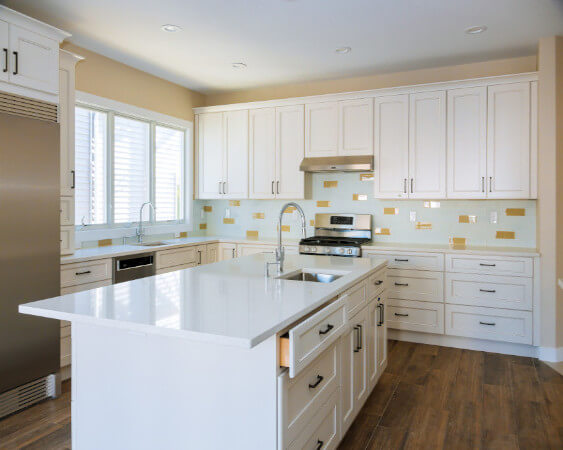
CHICAGO — Middleby Residential Showcase Gallery, an appliance retailer anchored by Viking Range and La Cornue, has relocated to a new, larger space at LuxeHome, the Chicago-based collection of boutiques for home building and renovation.
At more than 7,000 sq. ft., Middleby Residential will more than double the size of its existing showroom at the Merchandise Mart in downtown Chicago.
“The significant expansion will allow for greater visibility for Middleby Residen- tial’s collection of ultra-premium, luxury consumer brands,” said the company, whose featured brands include Viking, La Cornue, AGA, Lynx, U-Line, Marvel, Evo and Brava.
The post Appliance Firm Relocates Showroom To LuxeHome in Chicago appeared first on Kitchen & Bath Design News.
Did you miss our previous article…
https://www.conduithardware.com/?p=617
Natural Warmth
The kitchen is the command center of many homes, with countertops called upon to handle more and more tasks. Food preparation is just the start; surfaces in the kitchen are also used for work, school, pet care and much more. These myriad uses require countertops that are strong and easy to care for. And, because they are so prominent in the kitchen, these surfaces must also look great and complement the other elements in the space.
“Consumers want products that are easy to maintain, durable and able to sustain a very active lifestyle,” says Massimo Ballucchi, v.p. kitchen and bath business at Cosentino North America, based in Coral Gables, FL. Customers are upgrading their countertops for aesthetic reasons as well, he says. “They want products that are making their homes a showcase…products they can admire for a long time.”
Colors and finishes for surfaces vary greatly based on individual style and taste, but there’s a clear move towards incorporating natural elements. “Designs and materials that are inspired by nature continue to lead the way in home decor trends,” stresses Gwen Petter, director of design for Temple, TX-based Wilsonart. “We’re seeing it everywhere from décor and paint colors to textiles and building materials, including countertops. Research shows that nature can offer mental health benefits including decreasing stress and relieving anxiety, as well as improve happiness and well-being.”
Material choice is often driven by convenient maintenance. “With a wave of new home buyers, we’re still seeing many homeowners unaware of the varying levels of durability and maintenance required when it comes to their countertop choices, and they’re shocked when they realize the maintenance involved with many popular options, such as marble,” offers Gerri Chmiel, residential design lead at Formica Corporation in Cincinnati, OH. “Interior designers say homeowners most often ask for the look of marble or quartz, but also want durable surfaces that are easy to clean and maintain,” she adds.
This is leading designers to recommend products that are low maintenance yet don’t compromise on modern, beautiful design. Colors that add warmth to the space – along with bolder colors, textures and materials that help make a statement – are also currently trending. That’s according to manufacturers recently surveyed by Kitchen & Bath Design News.
Natural Look Without the Wear
An organic, natural feel is desirable, but that doesn’t mean consumers are necessarily choosing natural stone. Maintenance concerns are driving the need for products that have the look of natural stone while offering higher durability. This has created a shift towards quartz, porcelain, laminate and solid surface.
“Consumers are most interested in performance, in-style yet timeless looks and materials that offer solutions,” Petter remarks. “The serene beauty of quartz is always in high demand, and it’s no surprise when you consider the material’s many benefits: on-trend elegant designs for any space, easy to clean and maintain, durable, stain resistant.”
“Solid Surface is quickly gaining traction as one of the most sought-
after countertops for its reliable durability, impact resistance and nearly effortless maintenance,” she adds.
The tendency of natural stone to stain and etch has driven the market towards porcelain, which offers the look, feel and depth of natural stone without the maintenance concerns, says Michael Zeitlin, executive director of Raphael Porcelain in Lodi, NJ. “Zero maintenance is something that every homeowner dreams of having when going for that look,” he states.
Maggie Ellis, residential marketing leader at Corian Design, based in Wilmington, DE, says they see users gravitating towards stone-like aesthetics as well as industrial looks such as cements and ironstone. “It really depends on the consumer, how they use their space and their personal style. In general, natural patterns are in demand,” she reports.
Practical Matters
Kitchen surfaces need to stand up to a wide range of activities, especially with the overlap between home, school and work these days. Durability, easy maintenance and cleanliness concerns have had a great impact on countertop trends, manufacturers say.
“Worry-free is a prerequisite to any surfacing in today’s world – whether it be flooring or countertop. That demand is here to stay,” stresses Sam Kim, senior v.p. – product at MSI in Orange, CA.
“Materials in homes need to be durable, to withstand the increased wear and tear and more frequent cleaning,” notes Ellis. Because outdoor spaces are being used more often, she adds, materials such as high-performance porcelain that can stand up to UV rays and the elements are in demand.
“We’ve seen a remarkable shift in consumer priorities to include a new focus on cleanliness and therefore countertop surfaces that can stand up to this new cleaning routine the world has taken on,” Petter states. “Materials that offer antimicrobial protection and stand up to rigorous cleaning are in high demand as we continue into this new normal.”
“Quartz, in general, has always been a durable and low-maintenance option for countertops,” adds Ed Rogers, executive v.p., US Surfaces, for Austin, TX-based Vadara Quartz Surfaces. “We are always looking for ways to improve our materials, and I believe consumers now are becoming more educated before they ever leave the house as to the type of product they want and how they need to take care of it.”
Bernadette White, v.p. at Cancos Tile + Stone in Southampton, NY says that, along with durability, the fact that porcelain comes in multiple thicknesses – allowing for a backsplash in a thinner material and thicker countertop while still book matching veining patterns – makes it a popular choice.
Warming Up
Manufacturers note that white is still the most prominent color for kitchen countertops, but warmer tones with texture and character, rather than stark, bright whites, are on the rise.
“Homeowners are looking for simple, grounding spaces that bring a sense of calm, so we’re seeing light, white spaces continue to dominate,” observes Chmiel. “People are comforted by what’s familiar, yet they’re craving something fresh and don’t want white to feel too stark, so we’re seeing an infusion of color into traditional palettes with an added hint of texture and drama.”
Ballucchi says the most sought-after trend right now is a white countertop with veining. “It showcases a clean look and the veins bring us back to a connection with nature and the everlasting richness of marble,” he explains.
The kitchen countertop is still dominated by white marble colors, concurs Taewoo Kim, surface product design director at LX Hausys America, in Atlanta, GA. “With a white base tone, gray, gold, navy and green vein colors that go well with the cabinet color are predominant,” he adds.
“While we see warm tones increasing in demand, the majority of the market is still demanding a lighter/white design aesthetic,” offers Jason Brown, director of Product Management for Architectural Surfaces, based in Austin, TX. He says veined marble porcelains, especially those emulating natural marble patterns, are seeing a surge.
Sam Kim remarks, “Warmer tones of both background and vein colors are gaining popularity, as are alternative finishes, such as MSI’s concrete- finish in quartz, which features the feel of concrete without any of the maintenance, staining, fingerprints, etc.”
Ballucchi adds that there’s a trend toward soft grays with beige undertones, sometimes known as “greige.” These colors add a contemporary feel, he notes, but can also go well with traditional cabinetry. Adding the beige to colder gray warms it up, bringing a more organic feel, he adds.
Bold Colors and Textured Looks
Homeowners seeking to make a statement are often moving towards darker or more vibrant colors, often mixed with other materials to add contrast, manufacturers say.
“Consumers are more open to adding color to their countertops,” Ballucchi notes. “Just as blues and greens are getting stronger in cabinetry, equally saturated, solid hues are also being sought out in countertops, as seen in Silestone’s newly-launched Sunlit Days Collection.”
Brown agrees that colors are currently in demand. “We’ve also seen an increase in bold and vibrant colors in residential settings for countertop designs – bold bathrooms, for example. People like a statement piece. We’re also seeing statement pieces on the kitchen island, while the rest of the kitchen is a calmer color/design,” he notes.
Mixing materials helps create visual interest while also maintaining practicality. “We are seeing an increased interest in mixing and matching materials to maximize functionality and beauty,” Ellis reports. “For example, in the kitchen, some homeowners are using Corian Quartz for the island and Corian Solid Surface for the perimeter, and 100% natural Corian Endura porcelain for the backsplash.” Homeowners are also experimenting with texture, she adds.
“With color and patterns, we’re seeing continued emphasis on calming light colors and a twist on classic patterns,” says Chmiel. “When it comes to texture, there’s an increased interest in natural finishes that further contribute to a grounded space. Expect to see a greater emphasis on woodgrains and metals that develop a patina over time.”
“The feeling of concrete emphasizing modernity is attracting attention around the city,” adds Taewoo Kim. “Concrete, which has a rough feel as if it has been painted white, different from the existing marble texture, is increasingly attracting attention from consumers who are looking for a stylish kitchen.”
Rogers believes that color selection is dependent on the individual homeowner’s tastes and preferences, and whether they want a monochromatic look or interesting movement. “Book-matched patterns are very popular, particularly for consumers with larger island workspaces and seating areas,” he said. There is also movement to develop different textures, he adds. “For us, specifically, more diverse/complex backgrounds using a combination of colors and veining techniques add depth to the material – making it look as natural as possible.”
On the Edge
Edge treatments may not be the top consideration when choosing countertops, but they must be part of the conversation, manufacturers note. “It is commonly said that the edge gives character to the project,” says Ballucchi. “Although the choice is based on personal taste, some edges do complement certain kitchen looks better than others.”
Zeitlin notes that, even in residential treatments, waterfall edges and full backsplashes made from the same material as the countertop are being used more often to give the space a cleaner, more luxurious look.
White reports that clients are wanting multiple built-up edges in the kitchen – such as 5cm thickness on the island and 2cm thickness on the countertops.
Brown offers, “Eased edge or flat polish is predominantly the edge of choice. Mitred waterfall counters are also trending now.”
Clean lines rather than bulky, ornate edges are in demand, according to Rogers. Waterfall edges on islands and full height backsplashes to match the countertops are also popular, he adds.
Functional upgrades
The longer people remain at home due to COVID-19, the more concerned they become with ensuring that the space works for them. “There has been a surge in demand for home renovation, as people are spending more time at home and want their space to be both functional and beautiful,” Ellis reports. “We will likely continue to see interest in materials that are highly functional, sustainable and beautiful.”
“The function of the kitchen, especially the island, has expanded from simple cooking to socializing and hobbies, and as the size of the kitchen has increased, the tendency to emphasize the island has increased, as well,” notes Taewoo Kim.
Chmiel believes the pandemic inspired many homeowners to reassess the look and function of their spaces. “With working and schooling from home still being a reality for many families, homeowners are prioritizing hardworking, multifunctional surfaces that exude comfort and serenity, creating a calming foundation for a kitchen or bathroom,” she explains.
This increased demand has created some challenges for manufacturers, including rising shipping costs, challenging supply chains and longer lead times. “Even with those challenges, demand remains very strong, and projects are being booked well into next year,” reports Rogers. “The pandemic has, ironically, gotten consumers to reconsider their living spaces [and desire] a more personal way to make it their own type of space that really reflects their needs and wants.”
Conscious Consumers
More and more, issues of sustainability and social responsibility play a role in the products consumers are choosing, manufacturers report.
“We’re seeing homeowners place a larger emphasis on using environmentally friendly materials,” Petter notes. “Wilsonart takes great effort to incorporate sustainable measures in all our products and processes. From raw materials to indoor air quality, the results are products such as the Wilsonart HPL and Solid Surface collections, which are environmentally sustainable and offer an array of designs that mimic the best of Mother Nature without impacting the environment.”
Ballucchi agrees that sustainability is an important factor in product decisions. “Consumers are now spending time and doing the research on what products to buy, and they want a product that has sustainable practices in the manufacturing process,” he stresses. “Overall, consumers are shifting to buy products from companies
they can trust.” 
The post Natural Warmth appeared first on Kitchen & Bath Design News.
Did you miss our previous article…
https://www.conduithardware.com/?p=577
Daltile Celebrates Austin Showroom Opening
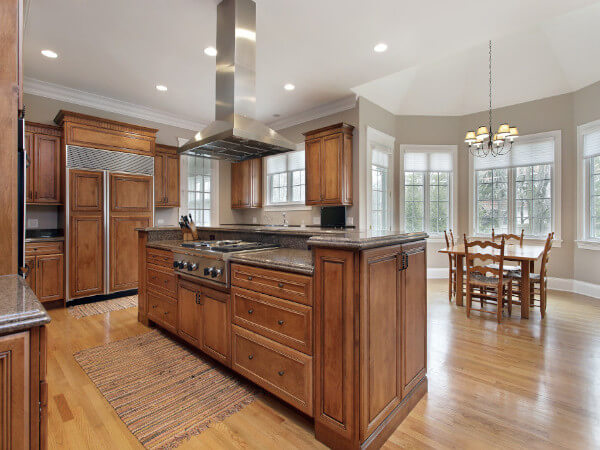
Dallas, TX – Daltile recently held the official grand opening event for its newest showroom, located in the South Lamar area of Austin, TX. The brand’s newest 4,000+-sq.-ft. showroom delivers easy access to the hottest tile products for Austin’s interior designers and architects, notes the firm.
“The design scene in Austin is really electric right now, with a lot of new build residential and commercial construction happening as well as a constant stream of remodels,” said Katy Ebbert, manager of Daltile’s new Austin showroom and licensed interior designer with 20+ years’ experience in commercial and residential interior design. “Austin itself is so exciting and that energy flows right into our city’s design scene. Austin is a melting pot of people and artistic ideas. There is a constant exchange with everyone bringing fun, unique ideas to the table when it comes to design.”
“The Austin design vibe is definitely unique,” said Brian Smith, senior marketing manager, Dal-Tile Corporation. “It’s kind of a funky, hippy, organic vibe. We nod to Austin’s personality with special features designed into our Austin studio location. As you enter our studio, you are greeted by a big tie-dyed tile wall, complete with the phrase, ‘Keep Design Weird’ in neon lights above the mosaic. Part of our studio is dedicated to outdoor design, where we prominently feature a favorite phrase of a well-known Austinite, ‘Alright, Alright, Alright.’ We have also transformed the front brick wall of our building outside into an impressive mural, designed and hand-painted by professional artist Daas. Daas took his original inspiration for the mural from Texas wildflowers and expressed this idea in a modern take that includes geometric tile shapes and perfectly reflects Austin’s unique flavor.”
“We have designed our new Austin showroom to focus on our high-end products and showcase these tiles in a unique way,” said Paij Thorn-Brooks, v.p. of marketing, Dal-Tile Corporation. “In addition to an easy-to-peruse showroom filled with product samples, our Austin studio features a generous number of vignettes throughout the showroom as well as story boards, flat lays, and generous slices of product. Accessing take-with product samples is very easy for the interior designers, architects and homeowners who are visiting our studio.”
“Daltile has also designed this studio to be an extension of our customers’ business,” advised Thorn-Brooks. “We encourage our local designer and architect customers to bring their own clients into our showroom. Not only do we put all of the hottest tile looks right at the professionals’ fingertips, making it easy to help their clients select just the right tile, but the stylish atmosphere of our studio, complete with work tables and conference rooms, provides such an inspirational ambience for a meeting. Although this particular studio focuses on showcasing Daltile’s high-end products, our entire product line is accessible to choose from during a visit to the Austin studio.”
The post Daltile Celebrates Austin Showroom Opening appeared first on Kitchen & Bath Design News.
Did you miss our previous article…
https://www.conduithardware.com/?p=538
BlueStar Names 2021 Contest Winner
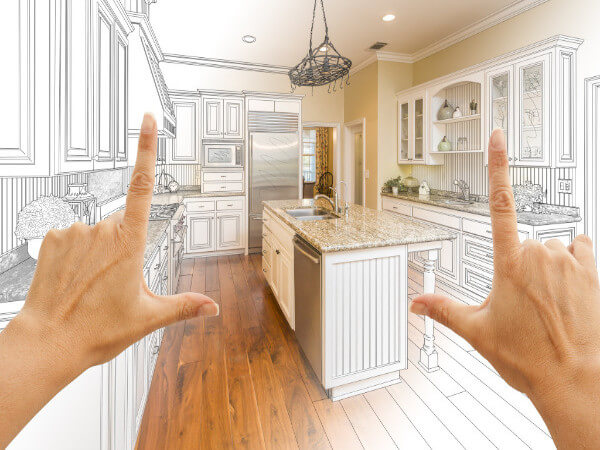
BLANTON, PA – Rasmussen/Su Architects of Philadelphia, PA has been awarded the grand prize in BlueStar’s annual design competition. This contest recognizes designers, architects, builders and remodelers from across the country and shows how performance, color and customization come together to create a bespoke, highly functional and luxurious kitchen space, notes the firm.
“The BlueStar design competition celebrates talented kitchen designers who are pushing the boundaries of color and creativity to help their clients realize their dream kitchens,” said Eliza Sheffield, president, BlueStar. “With our distinctive combination of restaurant-grade performance and unrivaled customization options, including 1000+ colors and finishes, BlueStar offers trade professionals truly unique options for clients looking to create statement kitchens.”
Grand prize winner Rasmussen/Su is an award-winning architecture firm specializing in custom residential design. Working together since 1995, firm principals Kevin C. Rasmussen AIA LEED AP and Vivian M. Su LEED AP bring diverse backgrounds and a collaborative spirit to the design process. The award-winning eat-in transitional galley kitchen features light wide-plank oak floors and dark blue Shaker cabinets and a 60-inch BlueStar RNB range with a Manhattan kitchen hood.
“We often are working on old townhomes in Philadelphia and it’s always a dimensional challenge to maximize functionality, light and space, and make it feel connected to the rest of the house. This kitchen is only a little over 14’ in width, but by expanding the views and consolidating closed storage we made it feel like an expansive kitchen, with the gorgeous 60″ BlueStar range as the centerpiece,” said designer Vivian Su.
The Grand Prize winner receives BlueStar appliances for his/her home kitchen and the title BlueStar Kitchen Designer of the Year.
Five finalists also were honored for their designs and use of BlueStar appliances:
- Angela Free and Lillian Byers, Angela Free Design, San Francisco, CA, www.angelafreedesign.com
- Steve Cooper, Cooper Pacific Kitchens, West Hollywood, CA www.cooperpacific.com
- Hillary Gilkey, HGC Development Group, Tampa, FL www.hgcdesignbuild.com
- Carolyn Michaelson, Carolyn Michaelson, RA LEED AP, Covington, KY www.cmichaelsonra.com
- Karen Swanson, New England Design Works, Gloucester, Mass, www.ne-dw.com
The judging panel included Regan Baker, Regan Baker Design, San Francisco, CA; Caroline Smith, Caroline V. Smith Interiors, Memphis, TN, the 2019 Design Competition winner; and Lynn Kloythanomsup, Landed Interiors & Homes, Berkeley, CA and last year’s Grand Prize winner.
The 2022 competition is open for entries from now through July 20, 2022. The kitchen design entry can be any style kitchen. A minimum of one BlueStar cooking appliance as the primary cooking appliance is required. Ranges, rangetops, refrigerators, gas and electric ovens and cooktops meet this requirement. Official rules and entry criteria can be found https://bit.ly/2LDUeCy. For general product information, visit BlueStarcooking.com.
The post BlueStar Names 2021 Contest Winner appeared first on Kitchen & Bath Design News.
Designer Crafts Thoughtful Brand
Salisbury, NC — When Sara Lee started her design business in Salisbury, North Carolina, she knew just what to name it – SISU Home Designs. “SISU is personal to me,” says Lee. “It is a word used by my grandmother and mother of Finnish and Norwegian heritage. In one word, it embodies determination, potential, grit, freedom, courage, preparedness, strength, community and heart.” She adds, “In the business of design, there is inherent potential for what is possible.”
This inherent potential of design has, according to Lee, always been part of what drives her. “I always enjoyed setting up rooms and drawing house plans, even as a child,” she says. “Design school was a natural decision, and I specifically fell in love with kitchen and bath design. There is so much technicality, plus creativity. It’s problem-solving, communicating and wonderfully challenging.”
Branding a journey
Like most in the industry, Lee worked her way up from the bottom. “My first opportunity was with a large cabinet manufacturer, and I worked in marketing and sales, drawing plans for nationwide Lowe’s store displays and ‘The New American Home’ projects.” After a subsequent stint with a small dealer in order to gain more sales experience, she moved to Washington, DC to get a feel for the luxury market at a high-end showroom.
“A move to North Carolina in 2013 gave me new opportunities to serve a uniquely southern clientele,” she continues. “I thrived and felt a new confidence for what I could do for people and their spaces.”
When it came time to hang out her own shingle, Lee was careful to take her personal journey in the industry into account, working with an expert to create a cohesive narrative across all her digital channels.
“The branding [for SISU] was created by a lovely woman in London – we had much communication about who I am and what SISU represents,” she says. “The brand experience engages the senses and imagination through a visual narrative that is timeless, elegant and full of intentional detail – a visual identity that speaks with poetry and textural appeal to communicate inherent possibility and expertise.”
She adds, “Consistency is important. The brand carries over into social media and, I believe, sets a standard of credibility.” The Instagram presence of SISU in particular features a balance of crisp, beautifully staged project imagery, personal touches and anecdotes and graphics featuring the company’s sprouting plant-inspired logo.
New growth
Like the little sprout featured in SISU’s logo, Lee cultivates her client relationships carefully. “I get to know my clients through many meetings, calls and even texts,” she notes. “I have the privilege of going into people’s homes, and that requires trust, and I honor that. Our welcome packet actually goes over the entire process from beginning consultation to photoshoot day! It gives my clients a nice road map of what will happen over the course of the next few months.”
Looking ahead to the new year, Lee anticipates growth for her business. “Plans for 2022: I would love to hire some help and continue moving toward having a fantastic showroom.” 
The post Designer Crafts Thoughtful Brand appeared first on Kitchen & Bath Design News.
Did you miss our previous article…
https://www.conduithardware.com/?p=523